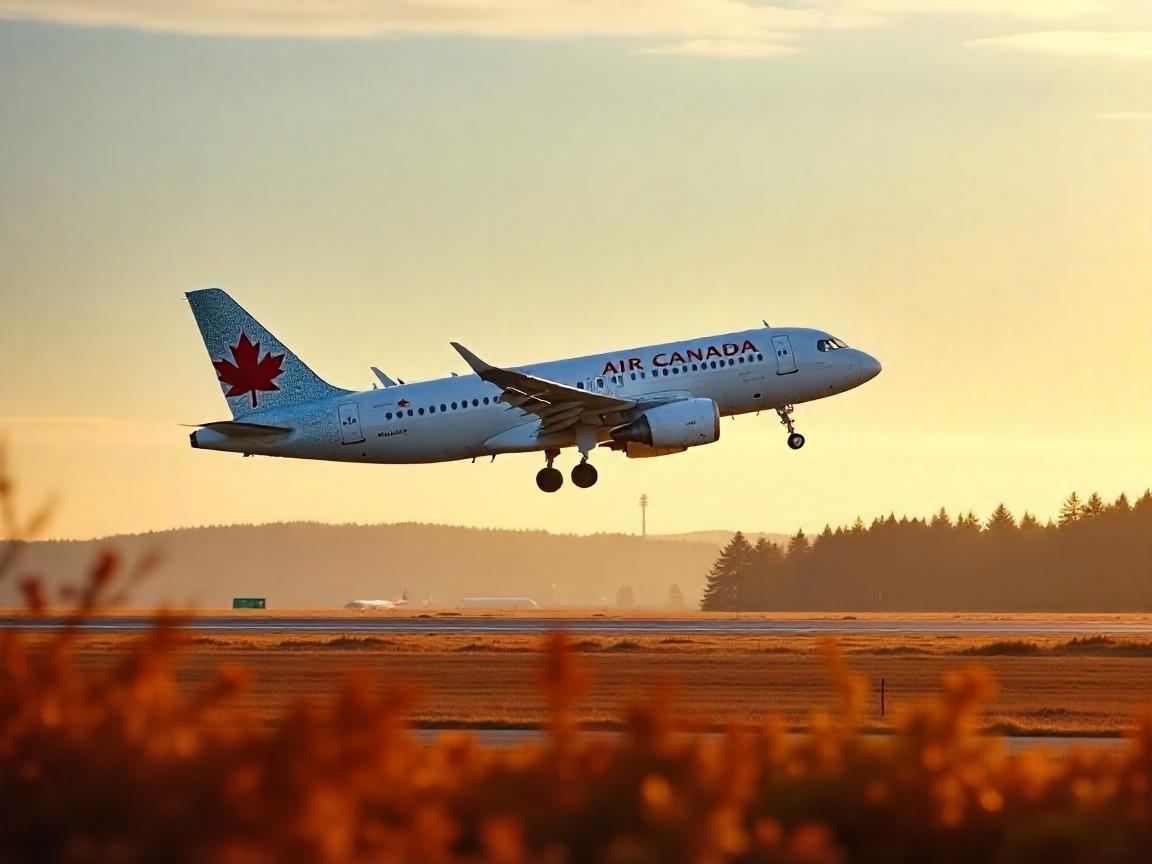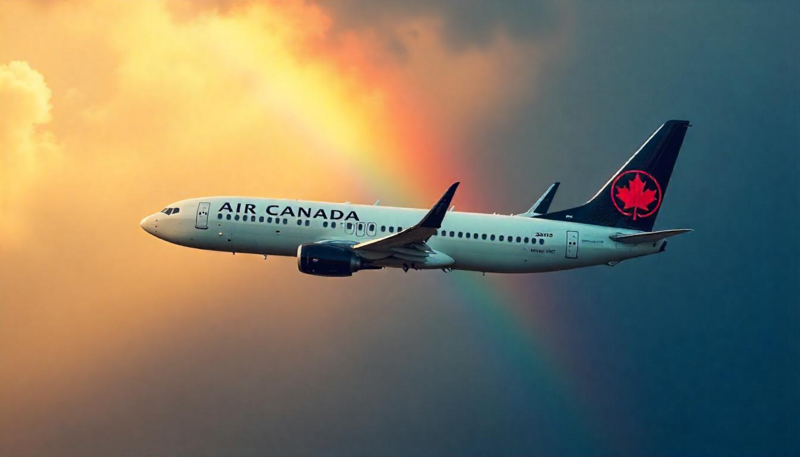Canada, Germany, Czech Republic, Sweden, and Italy Travel Sectors Get a Boost as Air Canada Redefines Long-Haul Travel With Dynamic New Seasonal and Year-Round Routes
Wednesday, June 11, 2025

Air Canada is reshaping international travel with its aggressive new route development connecting Canada to key European cities. With direct and impactful service from Toronto to destination cities such as Stockholm, Munich, Prague, and Venice, Air Canada is providing unmatched convenience and seamless transportation for business and leisure travelers. These new and seasonal services represent a strengthened global connectivity for Air Canada and a leadership position in international aviation. Regardless of whether you’re heading to Europe for work or vacation, Air Canada’s new network provides premium access to Europe’s top destination cities.
Air Canada, the flagship carrier of Canada and one of North America’s biggest airlines, boasts a large fleet of more than 200 aircraft, including the Airbus A330. This widebody aircraft is a crucial component of the airline’s extensive network, supporting both international and domestic operations. With 20 Airbus A330-300s in service, the airline operates numerous long-haul flights, particularly to Europe, Asia, and South America. The A330’s reliability and efficiency have made it a key player in Air Canada’s fleet. Despite its age, averaging 18.1 years, it remains one of the most crucial aircraft in its operation. Air Canada’s widebody fleet also includes Boeing 767s, Boeing 777s, and Boeing 787 Dreamliners. The Dreamliner, with an average age of 8.1 years, is the youngest widebody in the fleet and plays a pivotal role in its international operations.
In June, Air Canada’s Airbus A330-300 models are deployed on some of the airline’s longest international flights, connecting Canada to major European cities. The airline operates these services from its main hubs at Toronto Pearson (YYZ), Montreal Trudeau (YUL), and Vancouver International Airport (YVR). Air Canada’s strategic use of the A330 for both year-round and seasonal services has proven essential for maintaining its strong presence on transatlantic routes. This article will focus on some of the longest A330 operations in June, detailing the routes, capacity, and impact of these services.
One of Air Canada’s seasonal services operated by the Airbus A330-300 is to Stockholm Arlanda Airport (ARN) in Sweden. This four-times-weekly service connects Canada’s busiest airport, Toronto Pearson, with the Swedish capital. The flight spans 3,934 miles and typically takes around 8 hours when flying eastward. In June, a total of 16 flights will operate between Toronto and Stockholm, offering a total of 4,752 seats. With a total available seat miles (ASM) of 18,694,368, this seasonal route allows passengers to explore Sweden and Scandinavia, with connections through Air Canada’s Star Alliance partners. Other airlines operating to ARN include Lufthansa, United Airlines, and Delta Air Lines, but Air Canada’s seasonal offering adds much-needed capacity for travelers heading to and from North America.
The busiest route for Air Canada’s Airbus A330-300 is to Frankfurt, Germany. This year-round service is part of a broader joint venture with Lufthansa and its Star Alliance partners, facilitating seamless travel across the Atlantic. Air Canada operates up to 50 flights per month from Toronto to Frankfurt, making it one of the most frequented routes in the airline’s network. Each week, there are an average of 11.66 flights, with up to two daily departures. In June, Air Canada will offer 14,850 seats on this route, with a total of 58,702,050 available seat miles. The distance between Toronto and Frankfurt is 3,953 miles, and the flight typically takes around 8 hours and 30 minutes. As the primary gateway between Canada and Germany, this route is crucial for both business and leisure travelers and is complemented by Lufthansa’s own services from Toronto and other Canadian cities.
Air Canada also offers a seasonal service from Montreal to Venice, Italy, which operates four times a week during the Northern Hemisphere summer. This service complements the airline’s existing route from Toronto to Venice, another popular leisure destination. The route spans 3,963 miles, providing a total of 16,478,154 available seat miles throughout June. The A330-300 is the aircraft of choice for this service, providing 4,158 seats across the month. In June, Air Canada will operate 14 flights on this route, offering an average of 970.2 seats per week. This service enables travelers to enjoy Italy’s most romantic city, with connections to other European and North American destinations. Air Transat, a Canadian leisure carrier, also operates on this route, enhancing the connectivity between Canada and Italy.
Air Canada’s service to Munich, Germany, connects Canada’s largest city to the Bavarian capital. This year-round service is operated by the Airbus A330-300, with an average of seven flights per week, totaling 1,801 seats per week. In June, the airline will offer 7,722 seats on this route, covering a distance of 4,138 miles. The total available seat miles for this route in June will amount to 31,953,636 miles. Air Canada’s Munich service is an essential part of its European network, feeding into Lufthansa’s hub and providing numerous connecting opportunities throughout Europe. The collaboration with Lufthansa and other Star Alliance carriers enhances the connectivity between North America and Europe.
Air Canada’s seasonal service from Toronto to Prague is the sole direct connection between Canada and the Czech Republic. This route operates three times a week, offering 762.3 seats per week and a total of 3,267 seats for the month. The flight covers 4,165 miles, providing a total of 13,607,055 available seat miles in June. The A330-300 is used for this service, which represents a significant commitment to providing direct connectivity between Canada and Eastern Europe. The addition of this route has strengthened Air Canada’s European network, providing a direct link to one of the most culturally rich destinations in Europe. Delta Airlines also operates a seasonal service from New York JFK to Prague, competing with Air Canada on this important route.
In addition to the Montreal to Venice service, Air Canada also offers a seasonal direct flight from Toronto to Venice. This route runs approximately four times weekly, offering about 1,108 seats each week and a total of 4,752 seats per month. The distance for this flight is 4,270 miles, resulting in a total of 20,291,040 available seat miles in June. Air Canada’s seasonal offering complements services from other major U.S. airlines like Delta Air Lines and American Airlines. This seasonal route provides an essential link for Canadian and North American travelers seeking to explore Italy’s iconic city.
Air Canada operates a year-round service from Toronto to Vienna, Austria, with daily flights during the summer months. This route is crucial for business travelers and tourists alike, connecting Canada to one of Central Europe’s most vibrant cities. The A330-300 is the primary aircraft for this route, offering 2,079 seats per week and 8,910 seats per month. The total available seat miles for this route in June is 38,571,390, covering a distance of 4,329 miles. As part of its agreement with the Lufthansa Group, Air Canada connects seamlessly to Austrian Airlines’ network in Vienna, offering travelers access to the wider European market.
Air Canada is transforming international travel with new and ambitious routes from Canada to significant European capitals such as Toronto to Stockholm, Munich, Prague, and Venice. These vibrant services provide unprecedented convenience and smooth connectivity to passengers in Europe and beyond.
Air Canada’s use of the Airbus A330-300 on these long-haul routes highlights its commitment to providing reliable and efficient services for travelers. With an extensive network of international destinations and strong partnerships with other Star Alliance members, Air Canada continues to be a key player in global aviation. The airline’s strategic use of the A330 ensures it remains competitive, offering passengers a comfortable and seamless travel experience across multiple continents.










